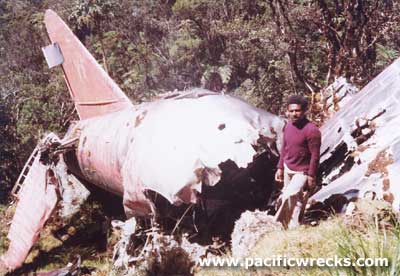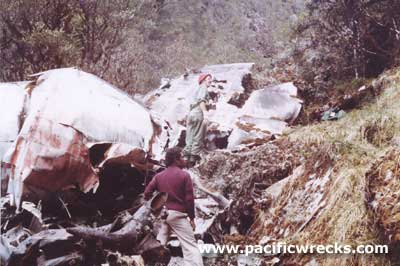|
|
|
|
| Missing In Action (MIA) | Prisoners Of War (POW) | Unexploded Ordnance (UXO) |
| Chronology | Locations | Aircraft | Ships | Submit Info | How You Can Help | Donate |
|
| IJN 751 Kōkūtai    PNG Museum 1982 |
Pilot Yoshikatsu Narusawa (KIA) Co-Pilot Mitsuo Iwao (KIA) Observer Hiroshi Nagamatu (KIA) Observer Tadashi Tamura (KIA) Radio Yoshio Sato (KIA) Engineer Koichi Toyama (KIA) Tail Gunner PO3c Mitsuru Otani (KIA) Crashed April 12, 1943 Aircraft History Built by Mitsubishi at Nagoya No. 3 Works during March 1943. At the factory, painted with green upper surfaces and gray lower surfaces. The fuselage Hinomaru was outlined with a white square. Delivered to the Imperial Japanese Navy (IJN) as Type 1 Attack Bomber Hamaki / G4M1 Betty manufacture number 1605. Wartime History Assigned to 751 Kōkūtai (751 Air Group) with tail number 378 painted in white. During early 1943 operated from Vunakanau Airfield near Rabaul. Mission History On April 12, 1943 during "Operation I-Go" took off from Vunakanau Airfield near Rabaul piloted by Yoshikatsu Narusawa on a bombing mission against Port Moresby. After the bomb run, this bomber was damaged and flew northward over the Owen Stanley Range until reaching the southern face of Mount Albert Edward and crashed on the East Dome at an elevation of roughly 9,500'. This bomber was possibly damaged by gun fire from P-38 Lightning pilot 2nd Lt. Richard E. Smith from the 39th Fighter Squadron (39th FS) who took off to intercept the Japanese air raid and claimed to shoot down a "Betty bomber over Mt. Albert Edward" and was credited with a confirmed aerial victory credit. Wreckage After the crash, locals claim the tail gunner survived the crash and was trapped inside the tail, calling out for help. Frighten by the crash, they ran away and he died of his wounds inside the wreckage. During November 1982, the wreckage of this aircraft was visited by Joe Hill, who was informed of the trapped gunner story by locals. Afterwards, Hill reported the wreckage to the PNG Museum curator Bruce Hoy who informed the Japanese Ministry of Health & Welfare. Recovery of Remains In late 1982, a team from the Japanese Ministry of Health & Welfare visited the crash site with Bruce Hoy. In the tail section, they recovered the remains of the tail gunner in situ. The tail gun 20mm cannon was recovered from the wreckage and transported to the PNG Museum for display. References Air'Tell Research Report "G4M Serial Numbers" by Jim Long Kodochosho, 751 Kōkūtai, April 12, 1943 Thanks to Bruce Hoy and Yoji Sakaida for additional information Contribute Information Are you a relative or associated with any person mentioned? Do you have photos or additional information to add? Last Updated March 3, 2021 |
Betty Photo Archive |
| Discussion Forum | Daily Updates | Reviews | Museums | Interviews & Oral Histories |
|